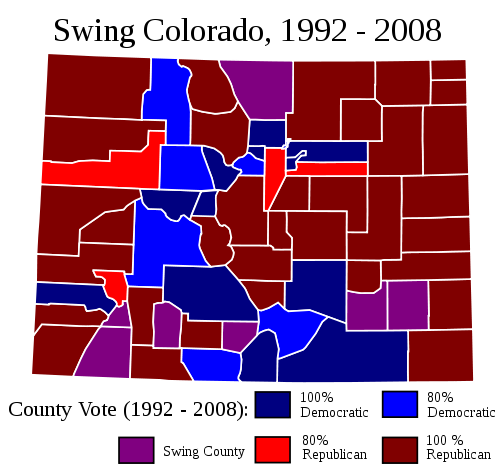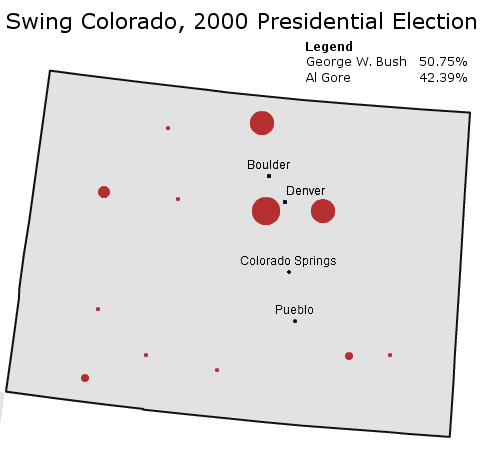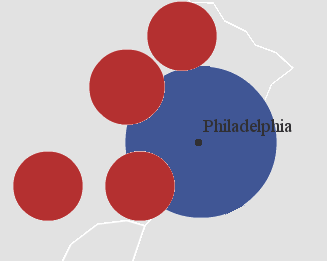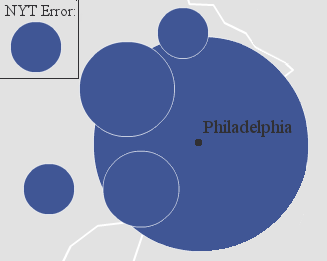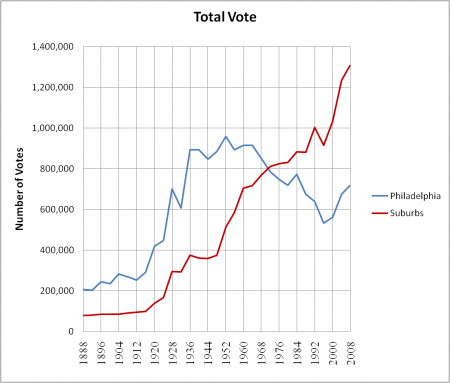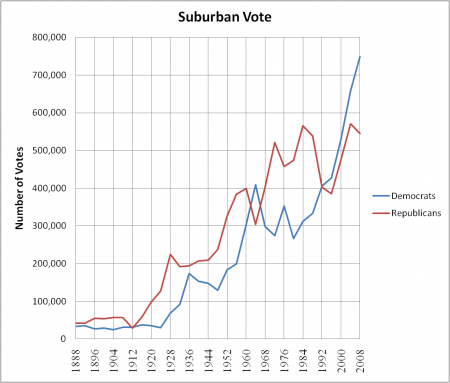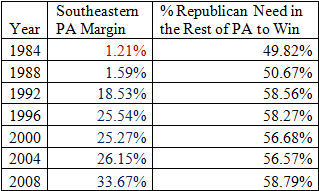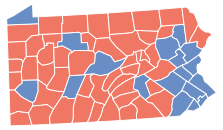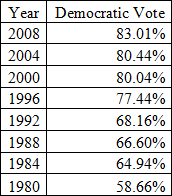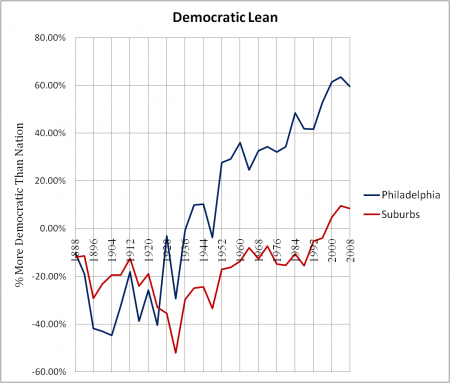This is the third part of a series of posts analyzing the swing state Colorado. It will focus on the swing areas in Colorado – the parts that will vote for both Democrats and Republicans. The fourth part can be found here.
Swing Colorado
The swing areas of Colorado lie on the edges of the Democratic base in Colorado, which forms a rough “C” shape (more on this in the next post). They can be mapped as below:
More below.
This map incorporates five presidential elections, from 1992 to 2008. Republicans won the state three times; Democrats twice. Of the swing counties pictured here, President Bill Clinton did better in the rural swing areas, mostly in southern Colorado. President Barack Obama, on the other hand, had his strength in several highly populated, suburban swing counties.
Swing Colorado is, like the Republican base, divided into two quite different domains. The first domain is composed by the rural, “Clinton” counties. This region has much in common with the Republican parts of rural Colorado; it is generally poorer and extremely thinly populated.
The difference lies with two things: Hispanics and ski resorts. Areas of rural Colorado with high numbers of Hispanics and ski resorts vote solidly Democratic; areas with low numbers vote solidly Republican. Swing counties generally have enough Hispanics or ski resorts to be competitive for Democrats, but not enough to automatically vote Democratic.
Interestingly, the rural swing counties with ski resorts have become more Democratic over the years, while the rural swing counties with Hispanics have become less so. Mr. Obama generally did worse in rural Hispanic Colorado than Mr. Clinton. Whether because the Hispanic population is locally in decline in this thinly populated area, or because Hispanics are voting more Republican, is uncertain.
The second part of swing Colorado consists of a set of three suburban counties surrounding the Denver metropolis. These counties used to vote solidly Republican, which was why Colorado was Republican for so long. Here is how they voted in the 2000 presidential election:
The counties – Arapahoe County, Jefferson County, and Larimar County – are pictured by the three large red circles around Denver and Boulder. As is apparent, their importance is of a magnitude above that of the rural swing counties. Indeed, in 2008 the three counties composed 30.8% of the votes cast in Colorado. Jefferson County had more votes cast than any other county in the entire state.
Winning these suburbs, therefore, is naturally important. Until recently they generally leaned Republican. As swing areas, Republicans usually didn’t win them by landslides; they generally had a ceiling of around 65% of the vote. But they won them, and therefore they won Colorado.
It is the shift in places like these that is responsible for recent Democratic gains in Colorado. Here is how swing Colorado voted in 2008:
Mr. Obama won Arapahoe County, Jefferson County, and Larimer County by 12.91%, 8.91%, and 9.73% respectively. Combined, he came out with a 77,067 vote margin out of swing Colorado. This was enough to erase the Senator John McCain’s margins in his two strongest counties – El Paso (Colorado Springs) and Douglas Counties. Mr. Obama also did this out of historically Republican territory.
Demographically, the three counties above share certain similarities. For suburbs, they are actually not that rich; median household income is only slightly above the national average (Jefferson County is richest). The counties are also fairly homogeneous; approximately four out of five residents in Jefferson and Larimer County are white and non-Hispanic. Arapahoe County, on the other hand, is more diverse; non-Hispanic whites compose about 65% of the population (a mirror of the country, in fact). Unsurprisingly, Mr. Obama did best in Arapahoe County.
To be fair, Mr. Obama’s performance in Colorado’s formerly Republican-leaning suburbs probably constitutes something of a ceiling for Democrats. Mr. Obama did extremely well in exurbs like these throughout the nation, in both the primaries and the general election. The housing crisis did not hurt things, either. A different Democrat might rely less on these suburbs.
Nevertheless, the very fact that a Democrat can now win places like Larimer County is something of an achievement for the party. Indeed, almost all of swing Colorado constitutes formerly Republican-leaning territory that Democrats have made competitive over the past two decades. Democrats have also carved out a new and many-sided base in Colorado during this time period. The next post will examine the complex elements that make up Colorado’s Democratic base. will examine the complex elements that make up Colorado’s Democratic base.
–Inoljt, http://mypolitikal.com/
